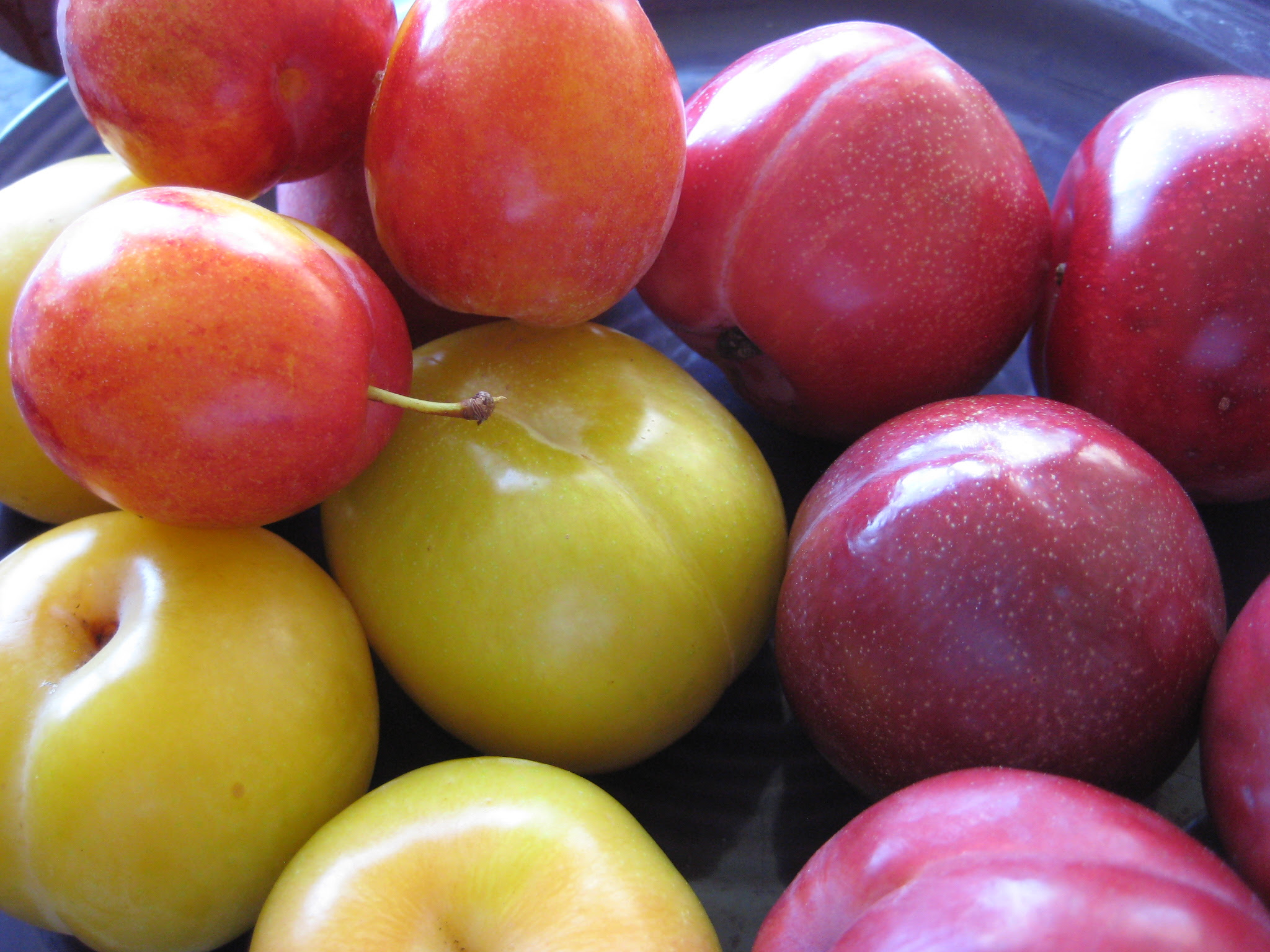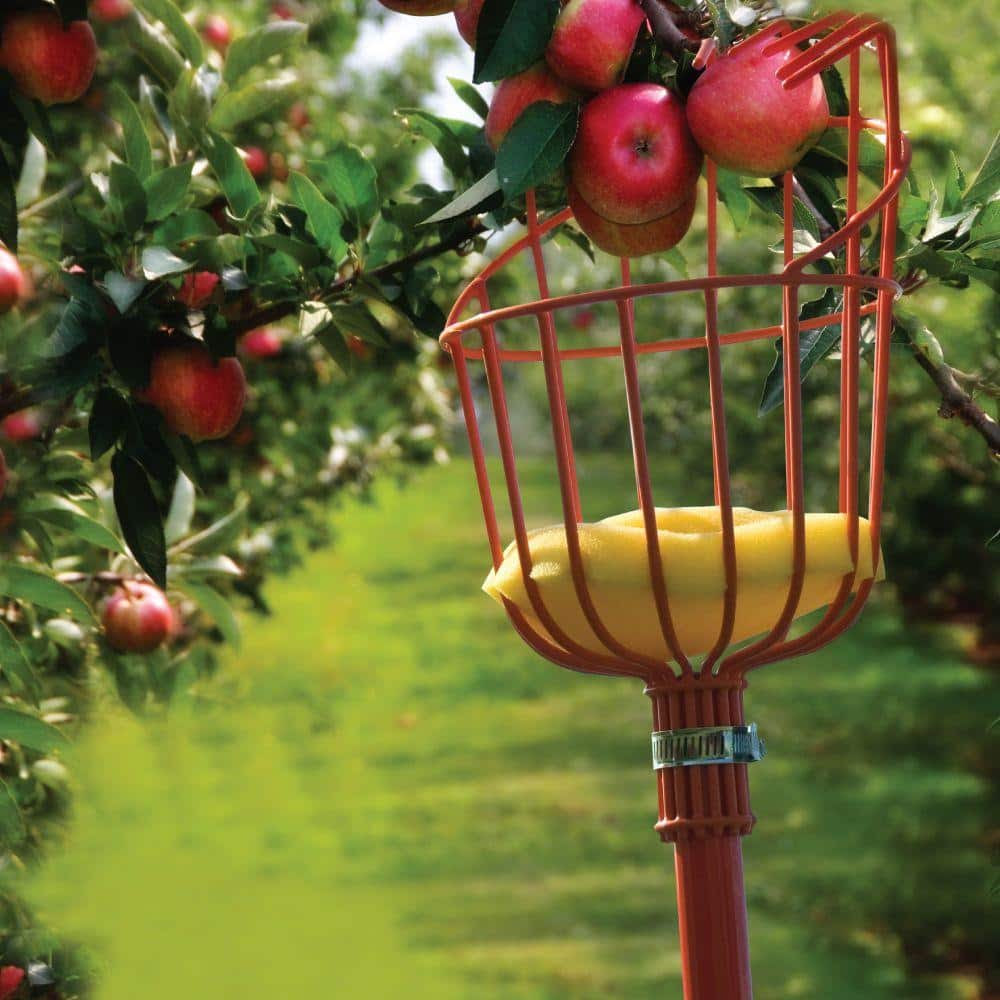After years of cultivation and year-round attention to orchard maintenance, it may finally be time to harvest from your fruit trees! It is often quite simple to tell when fruits are ready, as ripe fruits are well-colored and are easily plucked off the spur, with little resistance. The ground color, or the color of the fruit’s skin dis-regarding any red areas is a good way to determine whether or not the fruit is ready to be harvested.
SUMMER FRUITS
Apricots
Most apricots ripen in late June or early July. Apricots taste best when left to ripen completely on the tree. They will change from a green color to a yellowish orange and feel slightly soft. The fruit can be stored 1-3 weeks in a cool place.To prevent bruising or mold it is best to store in a single layer.

Peaches
Most peach varieties ripen in July. Peaches should be harvested when the fruits look fully ripe and no longer have green color on the skin. Depending on the cultivar, a peach may appear any shade between yellow and red when it’s ready for harvesting.

Plums
Most plum varieties ripen in July and August. Plums will change color as they ripen depending on the variety of fruit. Some will change from greenish-blue to a deep purple while other can change from yellow to red so it is important to know what variety you have growing. There are even a few varieties that are yellow when ripe! Japanese varieties are harvested and ripened off the tree while European plums are ready to harvest when the fruit begins to soften. When picking plums, gently grasp the fruit and twist from its stem. They are best stored at room temperature in a dry cool place.

Figs
The primary fig crop starts gently ripening in August or September (with proper winter protection, an even earlier ‘Breba’ crop is sometimes possible). Figs should be left to ripen completely on the tree and will not ripen off the tree. Unripe figs are green, but different varieties ripen to shades of red, purple, brown, yellow, and some even stay green! The neck of the fruit will soften and wilt slightly and the fruit will hang down. It is best to pick the fruit with some of the stem attached to delay spoilage. Figs will bruise easily so it is important to handle with care and not them tightly on top of one another.

Asian pears
The earliest Asian pear varieties ripen in August. Asian pears are ready to pick and eat as soon as they look ripe on the tree, with the finishing color being shades of brown, russet, or gold. Make sure there are no areas of green left in the ground color, and try a sample.

Apples
The earliest apple varieties ripen in August. Apples should be harvested when the ground color trans from green to yellow. Different varieties ripen in shades of red, yellow, russet, and green. Coloration doesn’t always indicate the fruit is fully ripe, so be sure to check the ground color and taste a sample.

Pawpaws
Pawpaws generally ripen in September. When ripe, pawpaws will turn from green to yellow or brown and the skin of the fruit will soften. Pawpaws are best eaten fresh off the tree, should be kept refrigerated, and do not store well longer than 3-5 days after harvest.

As always, one of the best ways to determine whether any fruit is ripe is by conducting a taste test. When a fruit appears to be ripe, and separates easily from the spur, try a bit of it to see how it tastes.
Equipment
One common problem with picking fruit is accessibility. Often fruit in trees are too high to pick from the ground. A fruit picker is a good investment to avoid this problem. Fruit pickers are poles with baskets on the end which allow you to pluck off high fruits and capture it in the basket.

Wearable fruit picking bags or buckets allow you to quickly and efficiently store your fruit as it’s being picked.
http://www.wellsandwade.com/pickingbags.html
http://www.wellsandwade.com/pickingbuckets.html
http://lancaster.unl.edu/hort/nebline/applestorage.shtml
http://www.youtube.com/watch?v=JyvEKwaQtfk
http://www.youtube.com/watch?v=X1__dpyE85w
http://www.youtube.com/watch?v=T_R0C-Gctf4
http://www.youtube.com/watch?v=tzAdvZCkG3g